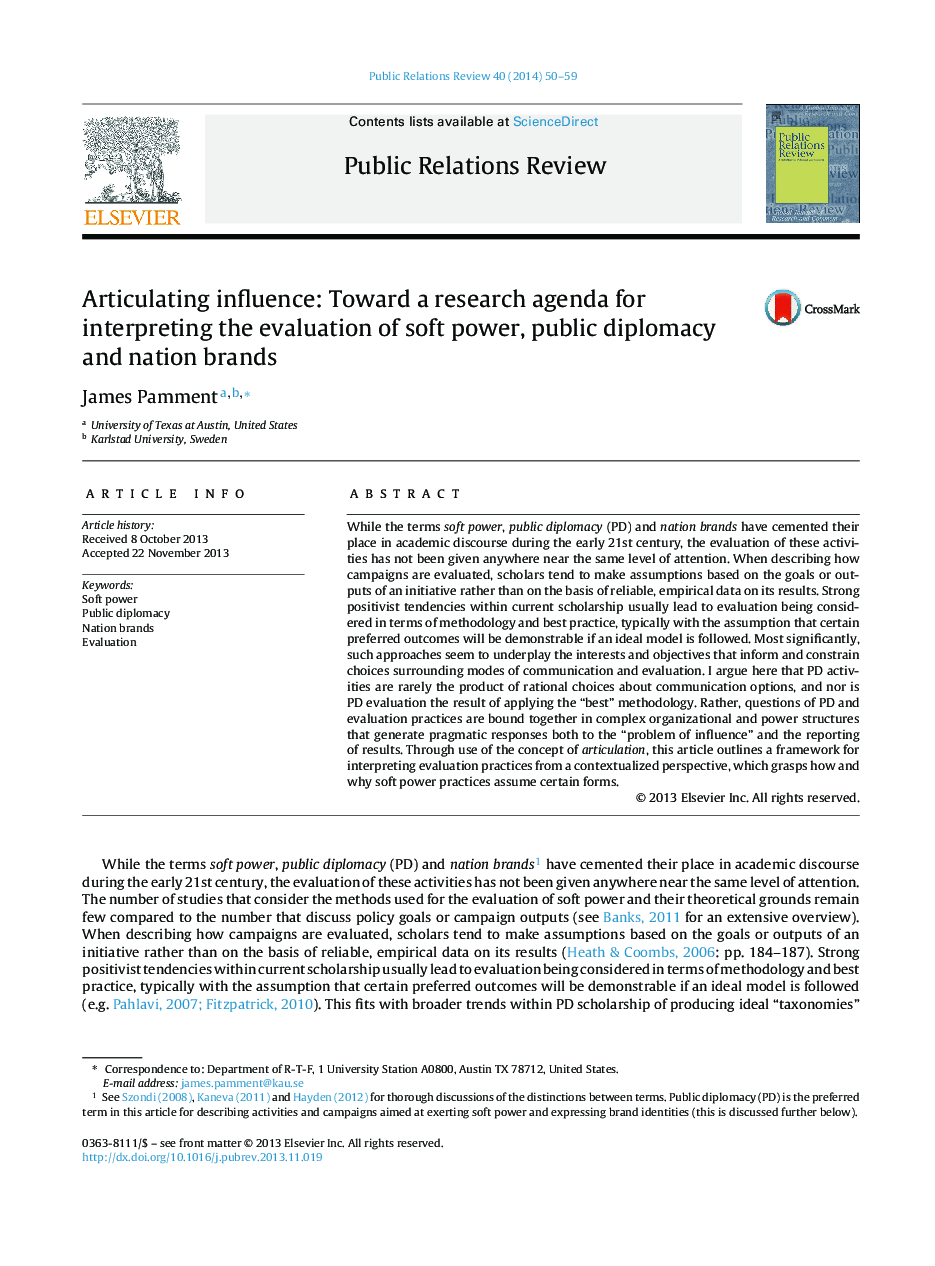| کد مقاله | کد نشریه | سال انتشار | مقاله انگلیسی | نسخه تمام متن |
|---|---|---|---|---|
| 139288 | 162490 | 2014 | 10 صفحه PDF | دانلود رایگان |
• A research agenda for approaching soft power evaluation from an interpretive perspective.
• An innovative theoretical development of taxonomies within soft power research.
• An analytical discussion of evaluation methods.
• Linking the Public Relations field to soft power, public diplomacy and nation brands scholarship.
• Case studies from different contexts.
While the terms soft power, public diplomacy (PD) and nation brands have cemented their place in academic discourse during the early 21st century, the evaluation of these activities has not been given anywhere near the same level of attention. When describing how campaigns are evaluated, scholars tend to make assumptions based on the goals or outputs of an initiative rather than on the basis of reliable, empirical data on its results. Strong positivist tendencies within current scholarship usually lead to evaluation being considered in terms of methodology and best practice, typically with the assumption that certain preferred outcomes will be demonstrable if an ideal model is followed. Most significantly, such approaches seem to underplay the interests and objectives that inform and constrain choices surrounding modes of communication and evaluation. I argue here that PD activities are rarely the product of rational choices about communication options, and nor is PD evaluation the result of applying the “best” methodology. Rather, questions of PD and evaluation practices are bound together in complex organizational and power structures that generate pragmatic responses both to the “problem of influence” and the reporting of results. Through use of the concept of articulation, this article outlines a framework for interpreting evaluation practices from a contextualized perspective, which grasps how and why soft power practices assume certain forms.
Journal: Public Relations Review - Volume 40, Issue 1, March 2014, Pages 50–59
